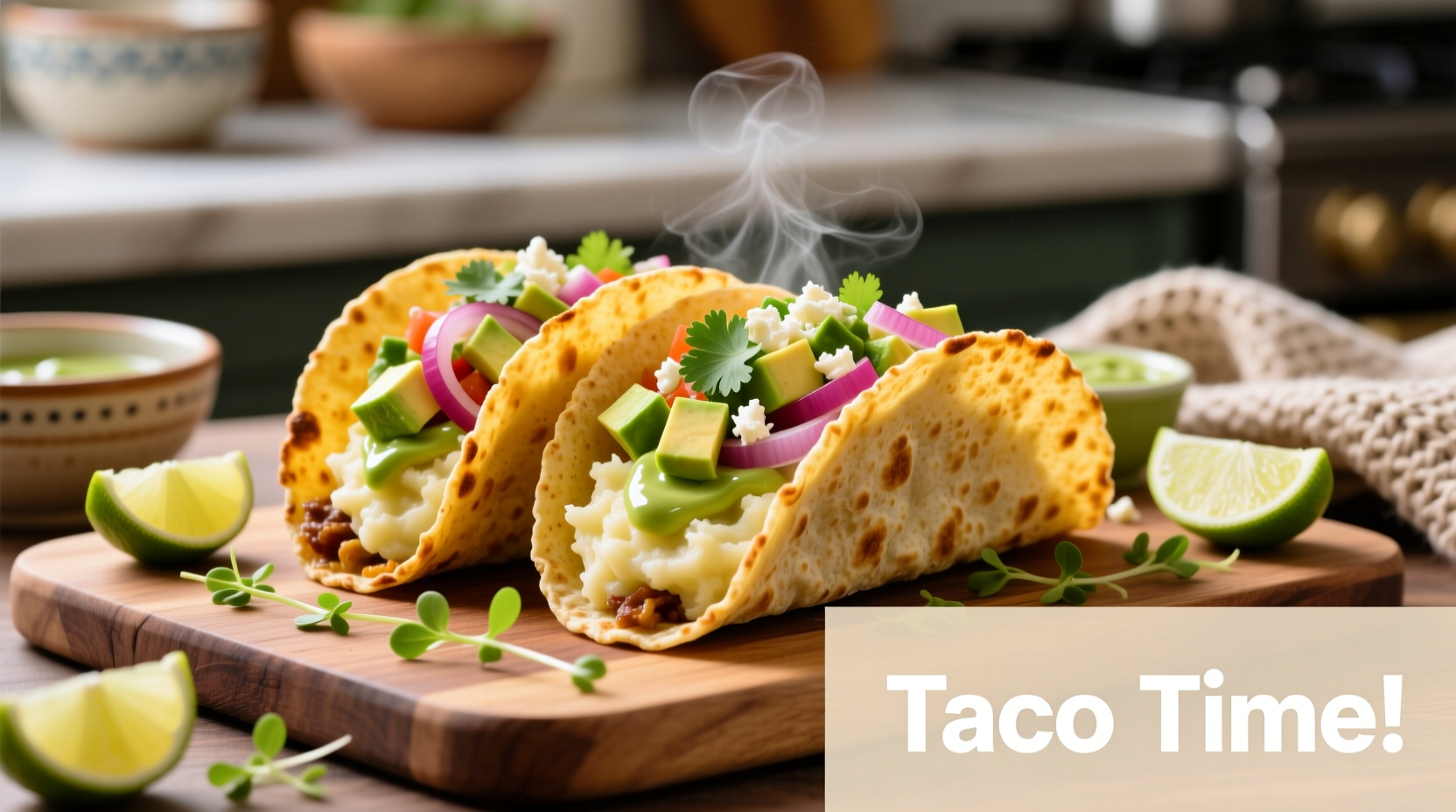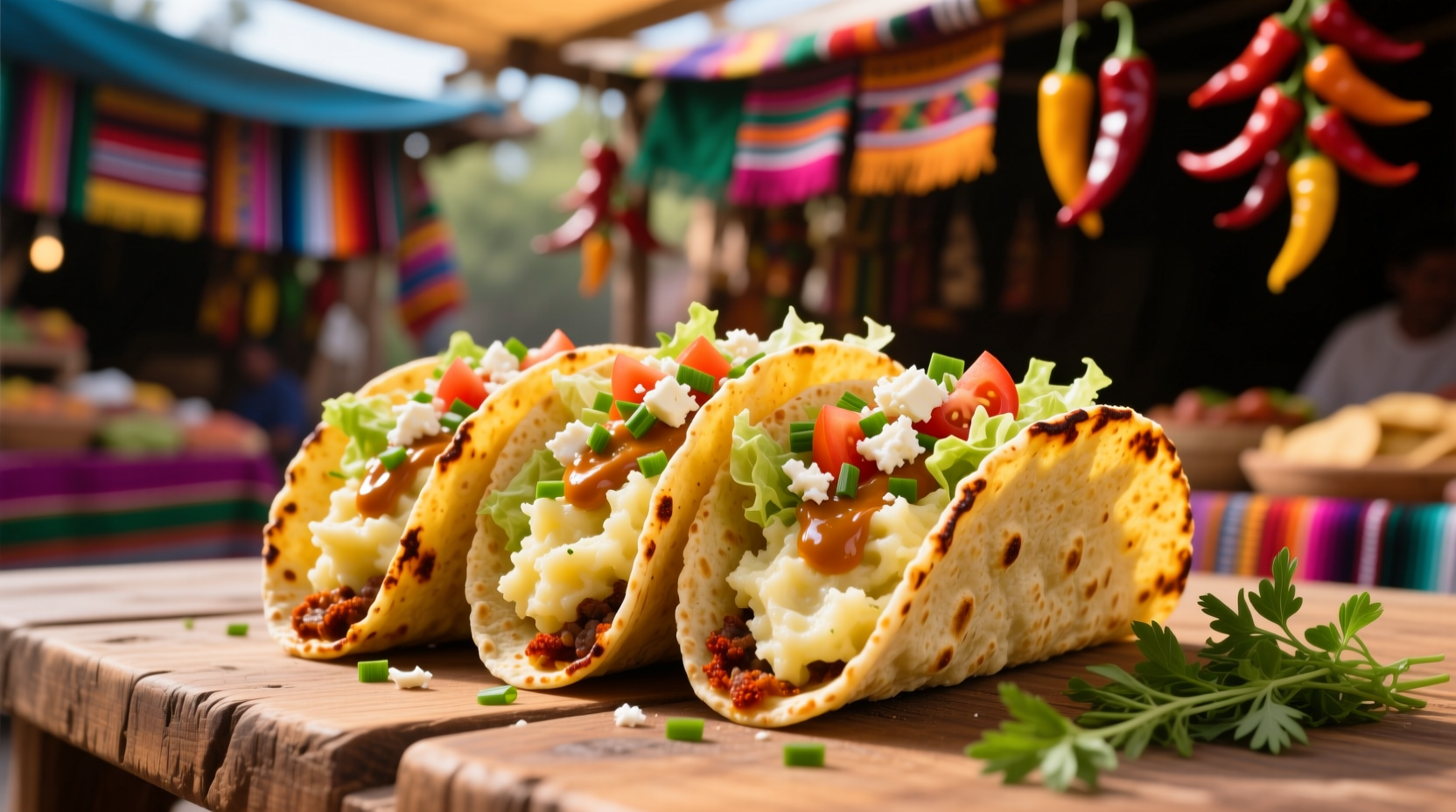The Unexpected Rise of Mashed Potato Tacos
While traditional Mexican cuisine doesn't feature mashed potatoes in tacos, this creative fusion has gained popularity across Tex-Mex and innovative culinary scenes. Food historians note that the combination emerged from practical kitchen solutions—using leftover mashed potatoes as a filling during potato harvest seasons in border regions. According to culinary anthropologists at the University of Texas at Austin's Center for Mexican American Studies, this adaptation represents a modern example of cultural food evolution where ingredients cross traditional boundaries.

Why This Fusion Works: Flavor Science
Mashed potato tacos succeed because they balance contrasting elements that satisfy multiple sensory preferences. Food scientists at Cornell University's Food and Brand Lab have documented how the combination of creamy interior and crispy exterior creates what they call "textural harmony"—a key factor in food satisfaction. The starch in potatoes also serves as an excellent flavor carrier for traditional taco spices.
| Potato Variety | Texture for Tacos | Best Seasoning Pairings |
|---|---|---|
| Russet | Ideal crisp exterior when fried | Cumin, smoked paprika, garlic |
| Yukon Gold | Creamier texture, less structural | Chives, lime zest, cilantro |
| Red Potatoes | Firm texture, holds shape | Cayenne, oregano, epazote |
Perfecting Your Mashed Potato Filling
Achieving the right consistency separates successful mashed potato tacos from disappointing ones. Professional chefs recommend using a 3:1 potato-to-liquid ratio when preparing your filling. Too much liquid creates a filling that leaks from the tortilla, while too little makes assembly difficult. For authentic flavor integration, incorporate traditional taco spices while mashing rather than after—this allows the seasonings to penetrate the potato starch molecules more effectively.
Critical Assembly Techniques
The structural integrity of mashed potato tacos depends on proper assembly methods. Unlike traditional tacos, these require a specific layering sequence:
- Lightly warm corn tortillas to increase flexibility
- Apply thin layer of refried beans as a moisture barrier
- Add cooled mashed potato filling (warm potatoes melt tortillas)
- Include minimal liquid ingredients to prevent sogginess
- Finish with fresh, dry toppings just before serving
Regional Variations Worth Trying
Across the Southwest United States, regional interpretations have emerged that reflect local ingredients and preferences. In New Mexico, you'll find versions incorporating roasted green chilies, while California chefs often add avocado crema. Food anthropologists at the Smithsonian have documented how these variations follow established patterns of culinary adaptation where immigrant communities reinterpret traditional dishes with available ingredients.
Avoiding Common Texture Problems
Many home cooks encounter issues with their mashed potato tacos becoming either too soggy or falling apart. The solution lies in temperature control and ingredient sequencing. Always cool your mashed potatoes to room temperature before assembly—adding warm filling to tortillas causes immediate structural breakdown. For extra stability, some chefs recommend adding a small amount of mashed black beans to the potato mixture, which provides additional binding without altering flavor significantly.
Nutritional Considerations
While delicious, mashed potato tacos contain approximately 350-450 calories per serving depending on preparation methods. Registered dietitians at the Academy of Nutrition and Dietetics suggest balancing this dish with fresh vegetable toppings to increase nutritional value. The combination of complex carbohydrates from potatoes and fiber from vegetable toppings creates a more balanced meal than traditional fried taco options.
When This Dish Shines (and When It Doesn't)
Mashed potato tacos work exceptionally well as brunch items or casual dinner options but have specific context limitations. Food service professionals note they're less suitable for formal dining settings or when served lukewarm—the texture deteriorates quickly after preparation. They also don't travel well for meal prep, making them best enjoyed immediately after assembly. However, they excel as customizable meal options for family dinners where individual topping preferences can be accommodated.
Final Pro Tips for Success
Seasoned chefs recommend these often-overlooked techniques for perfect mashed potato tacos:
- Use slightly undercooked potatoes for mashing—they hold shape better when assembled
- Add a tablespoon of cornstarch to the potato mixture for improved structural integrity
- Double-layer tortillas to prevent breakage during handling
- Chill assembled but unfilled tacos for 15 minutes before adding filling
- Serve with a side of lime crema to cut through the richness











 浙公网安备
33010002000092号
浙公网安备
33010002000092号 浙B2-20120091-4
浙B2-20120091-4